The Museum at Warm Springs on the Warm Springs Reservation in Oregon has exhibits of beadwork and basketry.
Beadwork
While museum exhibits of Plateau Indian beadwork are generally made with glass beads, glass beads are a relatively recent innovation, brought into the region by traders and others in the nineteenth century. However, beadwork has a long history in the region. In his book People of the River: Native Arts of the Oregon Territory, Bill Mercer writes:
“Beadwork has long played a significant role in the cultural history of the Columbia River people, and stone beads of various shapes and sizes have been found in tremendous quantities at numerous archaeological sites in the area.”
European-made glass beads quickly became accepted and preferred. Bill Mercer writes:
“The beads were an were an instant hit with the indigenous population; glass beads were easier to procure than handmade stone beads and they were available in huge quantities and in a range of colors.”
Popular colors were white, blue, black, and red.
With regard to beadwork among the Plateau Indians, Kate Duncan, in her chapter in Native Arts of the Columbia Plateau: The Doris Swayze Bounds Collection, writes:
“Glass beads have been important to Plateau peoples for more than two centuries. For generations, floral and figural beadwork has ordered, honored, and reinforced the essential connections of life—between people and nature, between people and people.”
During the nineteenth century there was pressure from the Christian missionaries to drop the geometric designs as the missionaries viewed these as pagan symbols. Missionaries gathered up the bags beaded with the “old” designs and burned them.
In the 1880s, contour-beaded backgrounds became common, suggesting a connection with Canadian Crees and Ojibwas. Kate Duncan reports:
“Other than on the Plateau, solid, completely or partially contoured backgrounds appear almost exclusively on Plains Cree-Ojibwa beadwork of the same period, particularly on a similarly shaped handbag on which there are similarities in motif.”
Flowers and animals have dominated Plateau Indian beadwork. Kate Duncan reports:
“A bag with such motifs unites the owner and the natural world, a reminder of the importance of each to the other.”
Kate Duncan sums up Plateau Indian beadwork this way:
“Nowhere else in North America is there the variety and experimentation with subject matter and its rendering that is found in Plateau floral and figural beadwork.”
In many museums, the most common examples of beadwork are bags. These bags are often made from trade cloth and then decorated with glass seed beads. Shown below are some of the beaded bags exhibited in the Museum at Warm Springs.
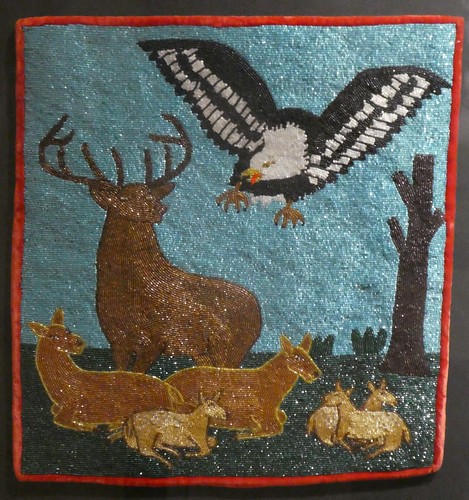 Shown above is a beaded bag by Phyllis Miller.
Shown above is a beaded bag by Phyllis Miller.
 Shown above is a beaded bag by Viola Kalama.
Shown above is a beaded bag by Viola Kalama.
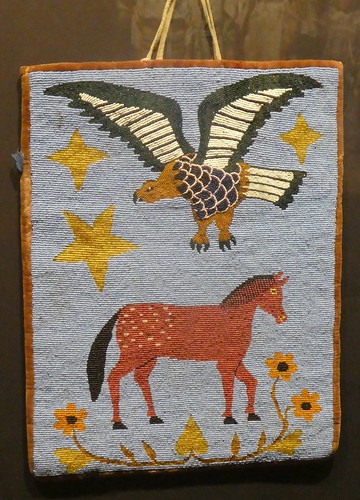 Shown above is a beaded bag by Sylvia Wallulatum.
Shown above is a beaded bag by Sylvia Wallulatum.
 Shown above is a beaded bag by Viola Kalama.
Shown above is a beaded bag by Viola Kalama.
 Shown above is a beaded bag by Larry Dick.
Shown above is a beaded bag by Larry Dick.
Baskets
The tribes of the Warm Springs Reservation traditionally made a wide variety of different kinds of baskets. In her chapter in Woven History: Native American Basketry, Mary Dodds Schlick writes:
“The Native people of the Columbia Plateau are rich in basketmaking tradition. For thousands of years their ancestors have used the roots, bark and grasses of the region to fashion containers for all their needs. Today a small number of descendants of these basketmakers continue this ancient heritage, an art form known worldwide for fine craftsmanship, variety in design, and beauty.”
Bill Mercer writes:
“Basketry is an art form that reached great heights of creative expression among the people of the Columbia River region. Although baskets served primarily functional purposes, they were nevertheless constructed with great care and decorated with sophisticated designs that lent them an aesthetic status beyond mere utilitarian objects.”
The baskets in this exhibit are a part of the Museum’s permanent collection.
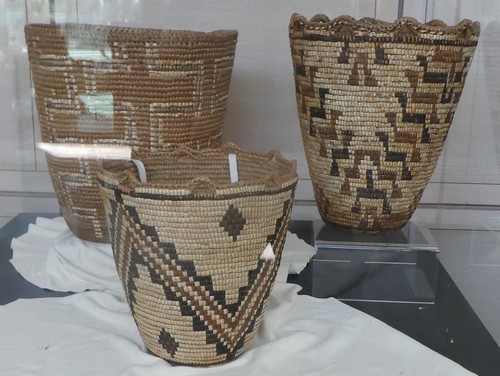

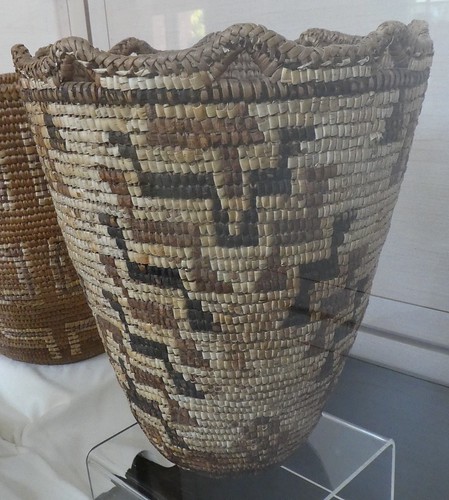

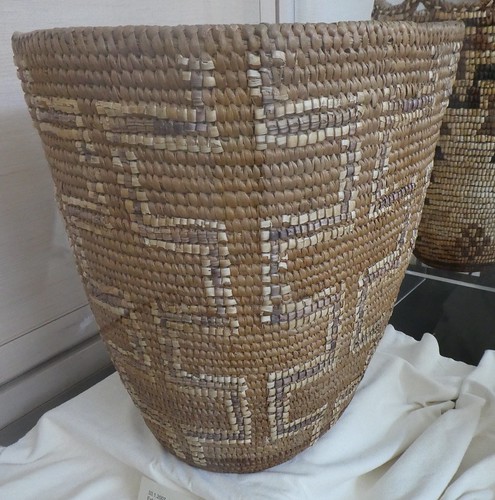
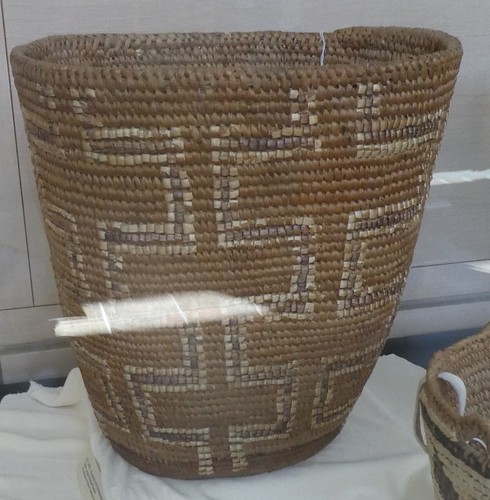
More American Indian museum exhibits
Indians 101: A collection of Indian beadwork (museum tour)
Indians 101: Some Plateau Beaded Bags (Art Diary)
Indians 101: Plateau Indian Beadwork at the Maryhill Museum (Photo Diary)
Indians 101: Anishinaabe Beadwork (Photo Diary)
Indians 101: Some Woodlands Indian baskets (museum exhibit)
Indians 101: Indian baskets in the Washington State History Museum (museum tour)
Indians 101: Nisqually and Puyallup baskets (photo diary)
Indians 101: Suquamish Basketry (Photo Diary)


